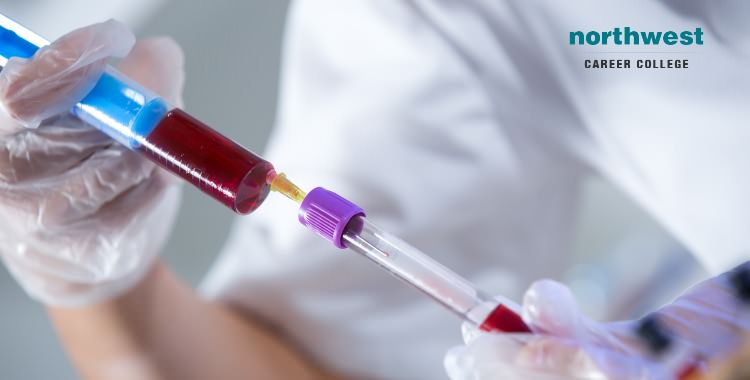The 5-Second Trick For Northeast Medical Institute - New Haven Campus Phlebotomy Course & Cna Class
The 5-Second Trick For Northeast Medical Institute - New Haven Campus Phlebotomy Course & Cna Class
Blog Article
Northeast Medical Institute - New Haven Campus Phlebotomy Course & Cna Class Fundamentals Explained
Table of ContentsThe Ultimate Guide To Northeast Medical Institute - New Haven Campus Phlebotomy Course & Cna ClassGet This Report on Northeast Medical Institute - New Haven Campus Phlebotomy Course & Cna ClassThe Only Guide for Northeast Medical Institute - New Haven Campus Phlebotomy Course & Cna ClassSome Known Details About Northeast Medical Institute - New Haven Campus Phlebotomy Course & Cna Class Some Known Facts About Northeast Medical Institute - New Haven Campus Phlebotomy Course & Cna Class.Some Ideas on Northeast Medical Institute - New Haven Campus Phlebotomy Course & Cna Class You Need To Know
Nonetheless, making use of such tools must be come with by various other infection prevention and control methods, and training in their usage. Not all security gadgets are suitable to phlebotomy. Before selecting a safety-engineered tool, individuals ought to thoroughly investigate readily available tools to identify their suitable usage, compatibility with existing phlebotomy methods, and efficacy in protecting team and people (12, 33).For setups with reduced sources, cost is a motoring element in procurement of safety-engineered devices. Where safety-engineered gadgets are not readily available, proficient use of a needle and syringe is acceptable.
labelling); transport conditions; interpretation of results for medical administration. In an outpatient department or clinic, offer a specialized phlebotomy work area containing: a tidy surface with two chairs (one for the phlebotomist and the other for the client); a hand wash basin with soap, running water and paper towels; alcohol hand rub. In the blood-sampling area for an outpatient division or center, offer a comfortable reclining couch with an arm remainder.
Unknown Facts About Northeast Medical Institute - New Haven Campus Phlebotomy Course & Cna Class
Make certain that the signs for blood sampling are plainly specified, either in a composed method or in recorded directions (e.g. in a research laboratory form). In all times, follow the methods for infection prevention and control provided in Table 2.2. Infection avoidance and control practices. Accumulate all the equipment needed for the treatment and place it within risk-free and very easy reach on a tray or trolley, making sure that all the items are clearly noticeable.
Introduce yourself to the client, and ask the client to specify their full name. Check that the laboratory form matches the patient's identity (i.e. match the person's information with the research laboratory kind, to make sure precise identification).
Make the client comfortable in a supine placement (preferably). Location a clean paper or towel under the patient's arm. Discuss the examination to be done (see Annex F) and obtain verbal permission. The client has a right to decline an examination at any moment before the blood sampling, so it is vital to make certain that the individual has understood the treatment.
Northeast Medical Institute - New Haven Campus Phlebotomy Course & Cna Class Things To Know Before You Get This
Extend the individual's arm and inspect the antecubital fossa or forearm. Find a here are the findings capillary of a good size that shows up, straight and clear. The diagram in Section 2.3, reveals common positions of the vessels, but lots of variants are feasible. The median cubital capillary exists in between muscular tissues and is usually the most simple to penetrate.
DO NOT put the needle where blood vessels are drawing away, due to the fact that this increases the chance of a haematoma. The vein should show up without applying the tourniquet. Locating the blood vessel will certainly assist in establishing the appropriate size of needle. Use the tourniquet regarding 45 finger sizes above the venepuncture website and re-examine the vein.
Samplings from central lines bring a threat of contamination or incorrect laboratory test outcomes. It is acceptable, however not perfect, to attract blood specimens when very first presenting an in-dwelling venous device, prior to attaching the cannula to the intravenous fluids.
A Biased View of Northeast Medical Institute - New Haven Campus Phlebotomy Course & Cna Class
Allow the area to dry. Failure to enable adequate contact time increases the risk of contamination. DO NOT touch the cleaned site; specifically, DO NOT place a finger over the capillary to direct the shaft of the subjected needle. It the site is touched, repeat the disinfection. Carry out venepuncture as complies with.
Ask the patient to form a hand so the blood vessels are extra noticeable. Go into the capillary quickly at a 30 degree angle or less, and remain to present the needle along the capillary at the easiest angle of entry - PCT Classes. As soon as adequate blood has been accumulated, launch the tourniquet BEFORE taking out the needle
The Buzz on Northeast Medical Institute - New Haven Campus Phlebotomy Course & Cna Class
Withdraw the needle carefully and apply gentle stress to the site with a clean gauze or completely dry cotton-wool sphere. Ask the client to hold the gauze or cotton woollen in position, with the arm expanded and raised. Ask the individual NOT to bend the arm, due to the fact that doing so triggers a haematoma.

The Definitive Guide to Northeast Medical Institute - New Haven Campus Phlebotomy Course & Cna Class
Where feasible, maintain the tubes in a shelf and move the rack towards you - https://qualtricsxmndtbdfqts.qualtrics.com/jfe/form/SV_8ofe66Qw84u3xLU. If the sample tube does not have a rubber stopper, infuse very slowly into the tube as decreasing the pressure and velocity made use of to transfer the specimen minimizes the danger of haemolysis.

Report this page